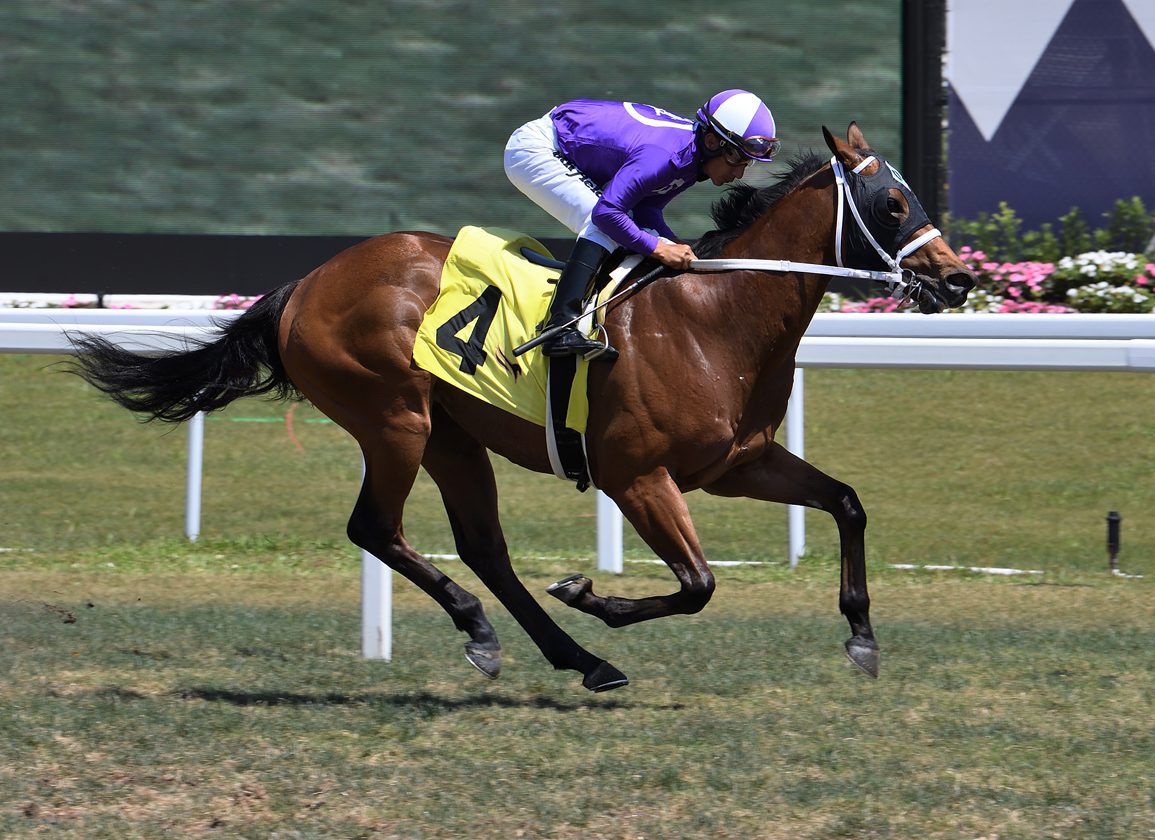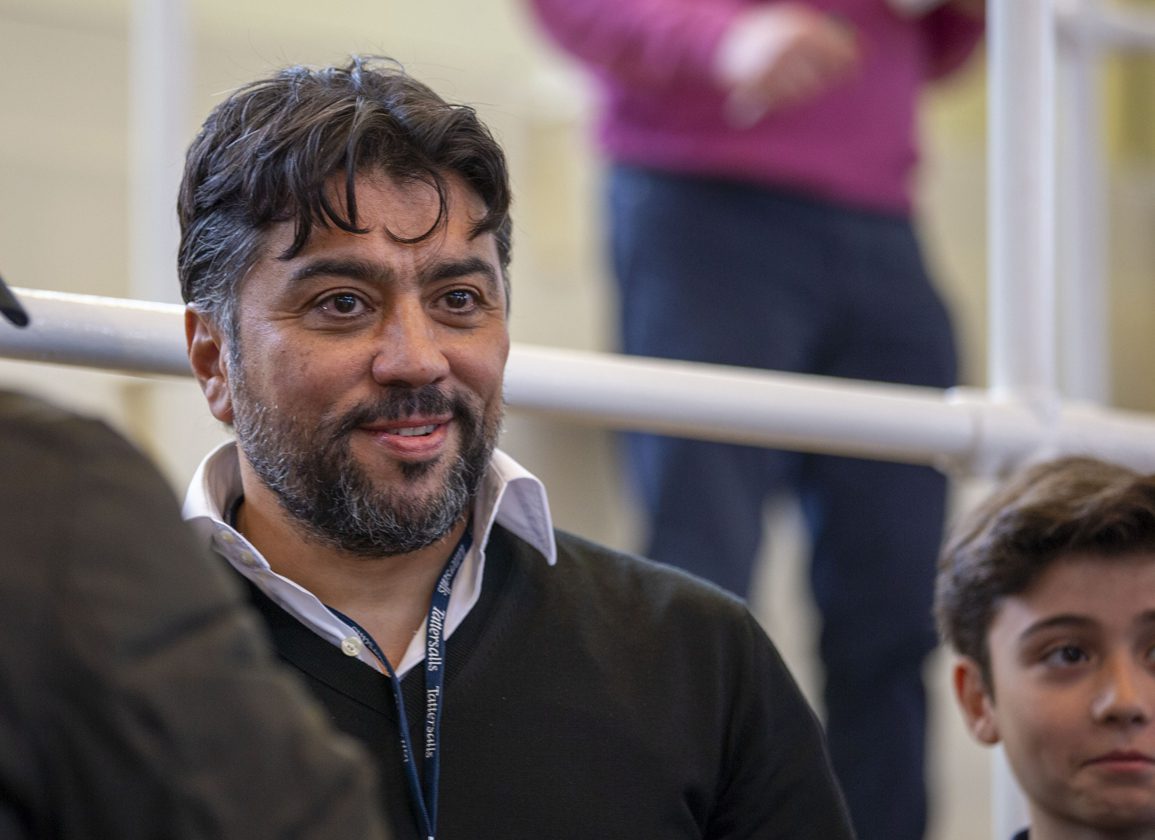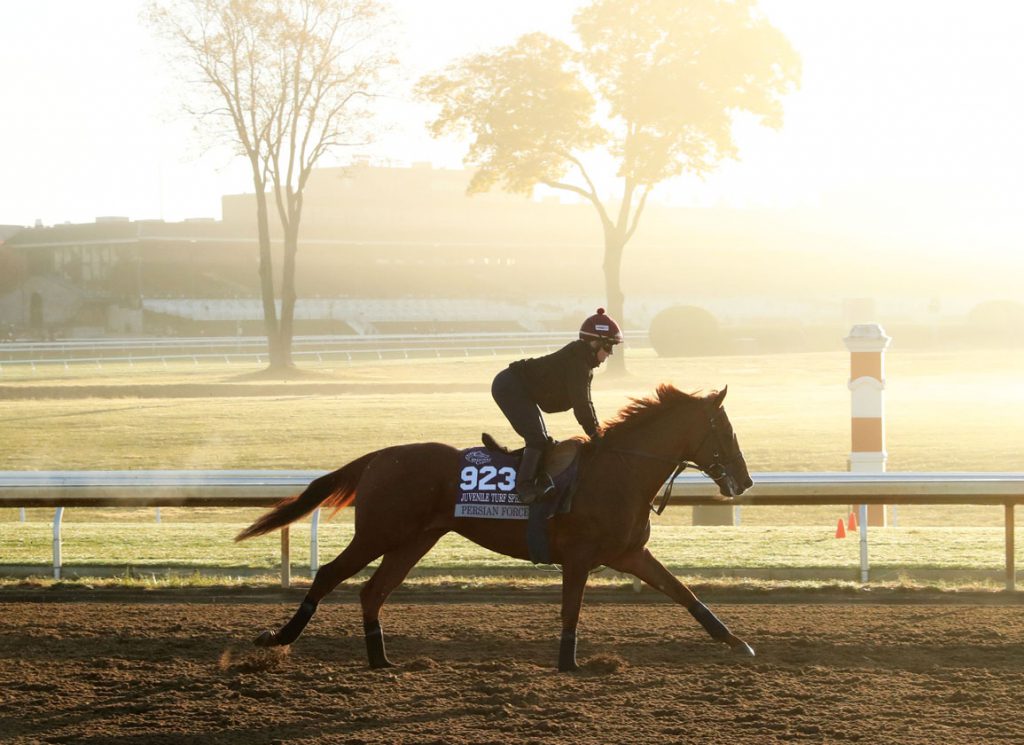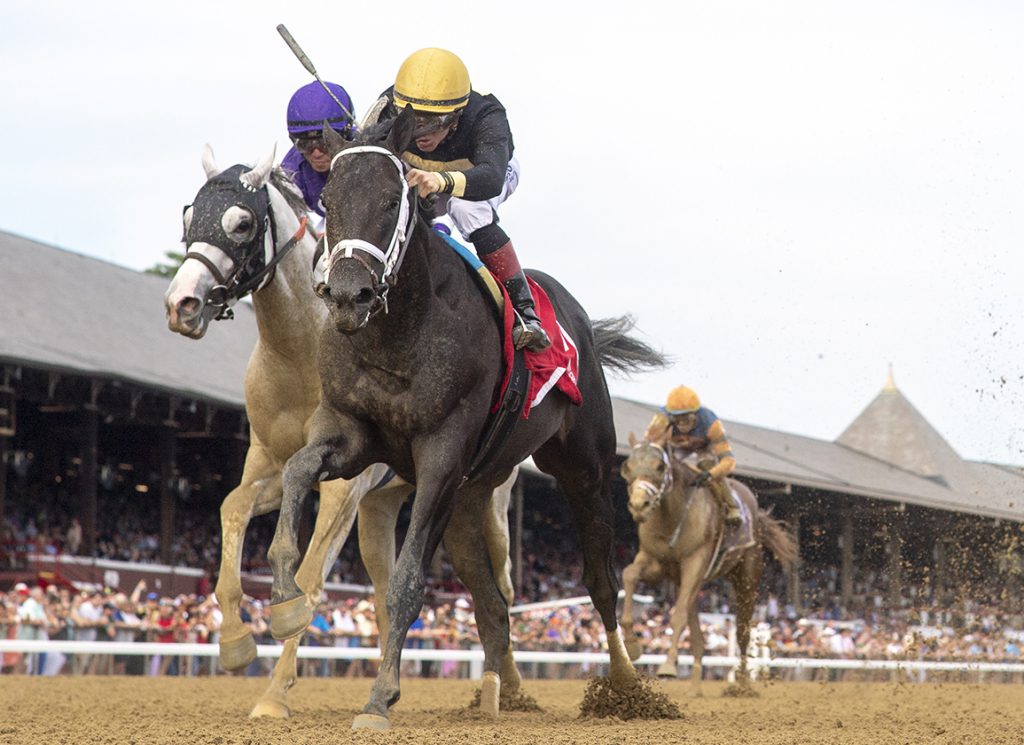The GII Gulfstream Park Oaks brought a new contestant into the GI Kentucky Oaks picture in victress Affirmative Lady. The connections of the blossoming daughter of Arrogate are newcomers not only to the Oaks trail, but to racing in the U.S. After launching its American stable two years ago, AMO Racing celebrated its first graded stakes win in the States with Affirmative Lady's score on Saturday.
Founded by football agent and businessman Kia Joorabchian, AMO Racing has proven to be a force on the other side of the Atlantic in recent years. Top performers are led by last year's G2 July S. winner Persian Force (Ire) (Mehmas {Ire}), who is new to stud at Tally-Ho Stud this year, plus multiple Group 1-placed Mojo Star (Ire) (Sea the Stars {Ire}) and a host of Group 2 winners including Hello You (Ire) (Invincible Spirit {Ire}) and Crypto Force (GB) (Time Test {GB}).
Joorabchian is based in London, but he made sure to be on site at Gulfstream for Affirmative Lady's two-length victory.
“It was probably the best moment that we've had in U.S. racing so far,” he said. “I knew she was not going to be a favorite, but I flew to Miami to see her run. It's a long way for me to go, but in my heart of hearts I knew she would pull off a great performance. She has so much ability and when you watch her work, you can see it. ”
A $210,000 Keeneland September buy, Affirmative Lady was among the first yearlings that AMO Racing purchased in America. Joorabchian remembers finding the filly well because, while he and his agent Robson Aguiar loved her at first sight, not many other buyers were interested.
“When I bought her, everyone was telling me that it wasn't a great buy,” he recalled. “No one really thought much of her other than Robson and me. She looked a little bit backward at the time, but she was very sweet. Her composure and the way she walked was amazing. We knew she wouldn't be early because she wasn't quite on her toes moving the way you would expect a fast, sharp 2-year-old.”
Just as Arrogate didn't truly blossom until later in his career, Joorabchian hypothesized that his new purchase would need plenty of time to develop. He knew he needed to find a patient conditioner and decided that Graham Motion was the perfect candidate.
“Graham really liked her from the word go,” Joorabchian said. “I think it's a credit to Graham. He took something that maybe wasn't the hip, trendy kind of horse. We actually paid a considerable amount for her at the time because Arrogate wasn't popular. I think with the Arrogates, early in their career people thought he was disappointing. But he's proving to be a great stallion and it's really unfortunate that he's not around because she is special.”
Affirmative Lady was winless in two starts at Keeneland last fall, but she touted her potential when she ran a close second to Julia Shining (Curlin) in the GII Demoiselle S. After she ran third in her sophomore debut in the Busada S. at Aqueduct, Motion sent the filly to Gulfstream. She broke her maiden there with first-time blinkers on Feb. 26. before she was sent off at 8-1 in the Gulfstream Park Oaks.
Following the victory, Motion said that the more he watches replays of the race, the more he is impressed with his trainee's performance.
“There were moments during the race where I was concerned,” Motion admitted. “I thought between the half-mile pole and the three-eighths pole that she might have been struggling a bit. But I've watched the race a couple of times now and once she got in gear, I thought she really came on and got away from them. She just toughs it out. When I asked Luis about it, he said he was never concerned. He thought he always had the horse, which reassured me. I think she wants to go farther. I believe a mile and a sixteenth is too short for her.”
While the Gulfstream Park Oaks was the biggest victory so far this year for AMO Racing, they've had plenty else to celebrate recently. One week before Affirmative Lady's win, they had their first stakes winner in America with Crispy Cat (GB) (Ardad {Ire}) in the Texas Glitter S. The colt was a Group 2-placed juvenile in England before he transferred to Jorge Delgado for his 3-year-old season.
Also last Saturday, AMO Racing had the winner of the first juvenile contest of the year in Ireland with Bucanero Fuerte (GB) (Wootton Bassett {GB}). On the same day, 3-year-old Mischievous Doll (Into Mischief) broke her maiden at Turfway Park for Paulo Lobo.
“It was a fantastic week from Ireland to Miami to Kentucky,” said Joorabchian. “Affirmative Lady was the height of it. We've been very patient with her and it was one of the highlights of my racing career because it was the horse that no one really wanted, but that we loved.”
2023 is already AMO Racing USA's biggest year yet and the operation is just getting started. Joorabchian said that their string here is upwards of three times the size of what it has been the past two years. Nearly 20 horses purchased here are aiming for the starting gate this year and another 20 are shipping in from Europe.
“I'm hoping that within the next few years, we will be pretty balanced between having the same number of horses here as we do in Europe, or maybe even more here,” said Joorabchian.
Asked about the appeal of racing in the U.S., Joorabchian explained that he was drawn to better competition and more prize money.
“U.S. racing is moving upwards,” he said. “The competition is much tougher because you have much bigger prize money. If you do well here, you're really rewarded. If you do well in the U.K., it's more about the value that you're creating in your horses rather than the prize money. I think the competition is much better here as well. You're competing against more people across the spectrum. As an owner like me, I want to compete with more people and be more on level terms and I think the U.S. creates much more competition.”
AMO Racing USA horses are gearing up for 2023 campaigns with trainers all across the country.
Jorge Delgado trains recent stakes winner Crispy Cat, who Joorabchian said is pointing toward the Keeneland race meet and perhaps after that, a trip to Ascot. Delgado's string also includes Olivia Darling (Palace) a 4-year-old filly who ran second in the Minaret S. at Tampa Bay in February; New York Thunder (Nyquist), who won his first two starts at Gulfstream late last year as a juvenile and is now training at Keeneland; and Kingmax (Ire) (Kingman (GB}), a Group 3-placed 4-year-old colt looking to make his U.S. debut in the coming weeks.
Paulo Lobo's fleet of AMO horses includes recent maiden winner Mischievous Doll (Into Mischief) and Thunder Love (GB) (Profitable {Ire}), who came to America last year as a 3-year-old and scored a win at Turfway in February. Hurricane J (Nyquist) ran seventh in last year's GI FanDuel Breeders' Cup Juvenile after two consecutive juvenile wins, but was unplaced in his sophomore debut in February. He now looks to get back to his winning ways in the Lafayette S. at Keeneland on Friday.
“We still have really high hopes for him,” said Joorabchian. “We just think he needed a little more time and I'm hoping this next race will be a lot better.”
Wesley Ward has added a few AMO European exports to his stable with Lady Hollywood (GB) (Havana Grey {GB}), the winner of the G3 Prix d'Arenberg last September who finished a credible fifth in the GI Breeders' Cup Juvenile Turf Sprint, as well as three-time group winner Go Bears Go (Ire) (Kodi Bear {Ire}).
“We have a really exciting group of horses,” reflected Joorabchian. “Racing is something that I have a passion for and the passion is just getting bigger and bigger. I hope we can achieve some fun things because we're putting a lot behind it.”
Despite many Group 2 and Group 3 wins and quite a few Group 1 placings, AMO Racing is still searching for its first Group/Grade I victory. Their next chance might be on the first Friday in May.
Motion, who will be will be seeking his first Kentucky Oaks win, said that Affirmative Lady came out of last weekend's race in fine shape.
“She got a lot of dirt in her eyes and had a sore eye the next morning, but it looks good now,” he said. “She'll stay in Florida for a few weeks and probably ship to Keeneland around the 17th and we'll breeze her that weekend. The timing has been great. To be able to give her five more weeks until the Oaks really couldn't be better.”
Joorabchian said he has not yet been to the Kentucky Derby or the Oaks, but added that he is looking forward to this year's experience with Affirmative Lady and hoping for many more trips there in the future.
“When you're racing at the level that we're at now, your dream is to get to the Oak and the Derby, so this is going to be a very special moment,” he said. “We have put this filly through some tough tasks and she has come through in all of them. She has already hit her expectations and everything now is a bonus.”
The post Affirmative Lady Launches AMO Racing’s U.S. Operation appeared first on TDN | Thoroughbred Daily News | Horse Racing News, Results and Video | Thoroughbred Breeding and Auctions.




